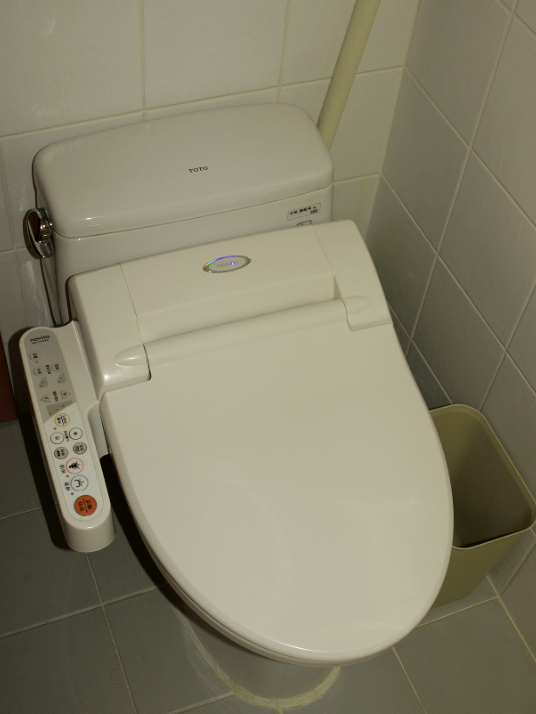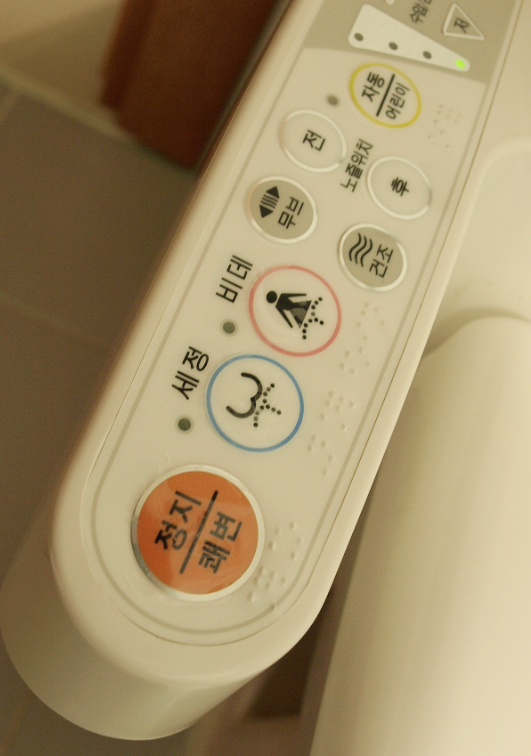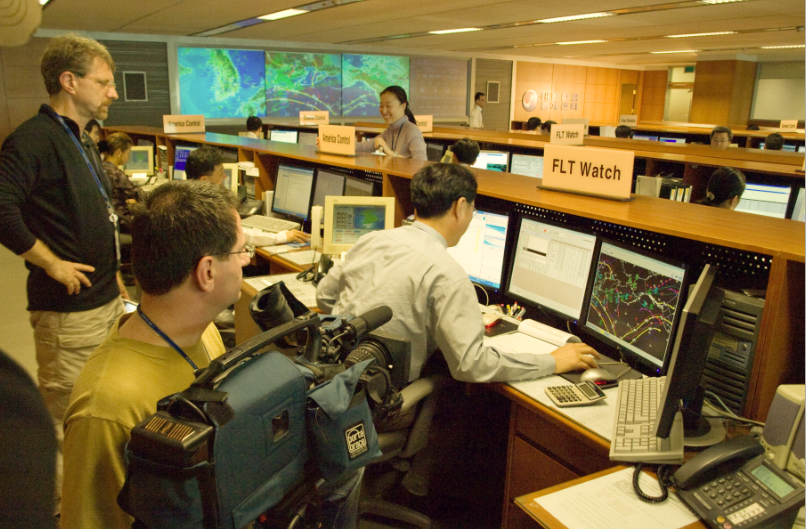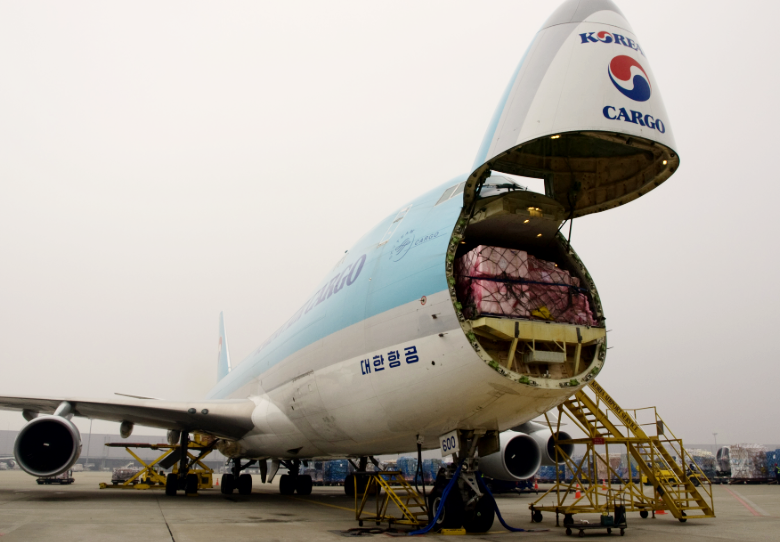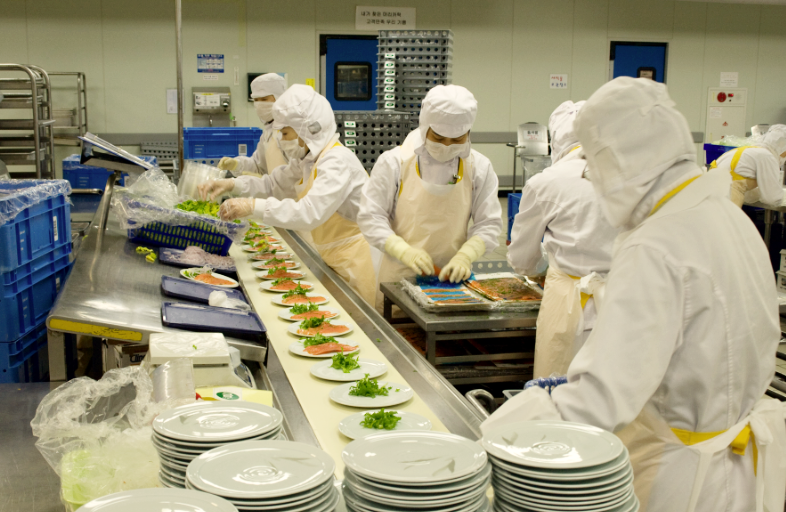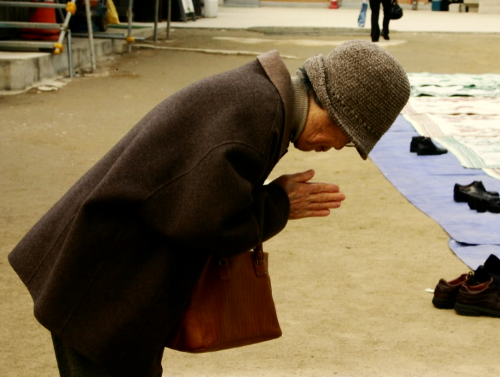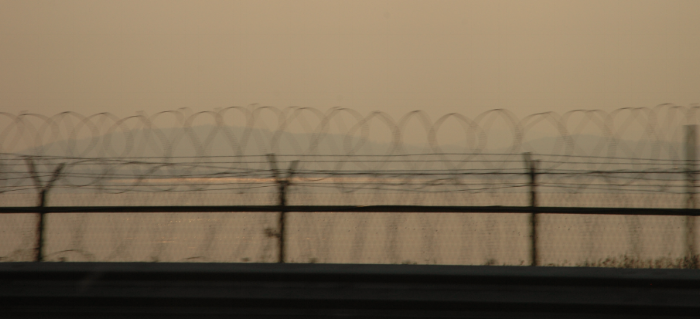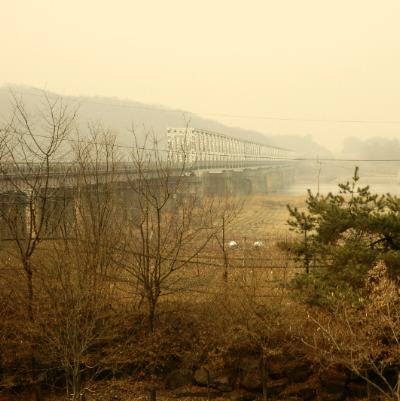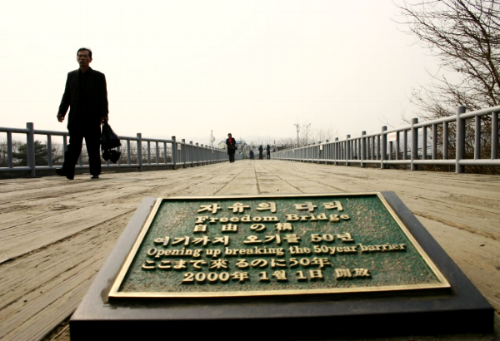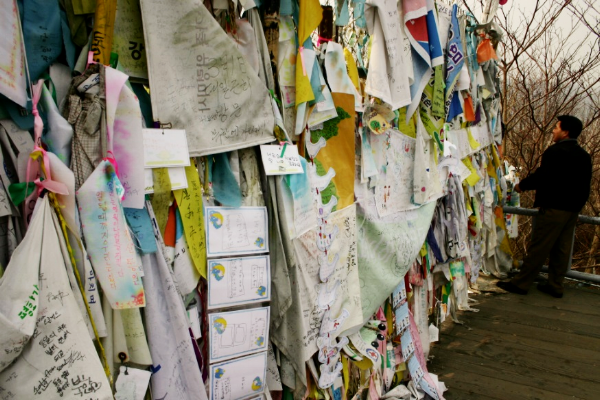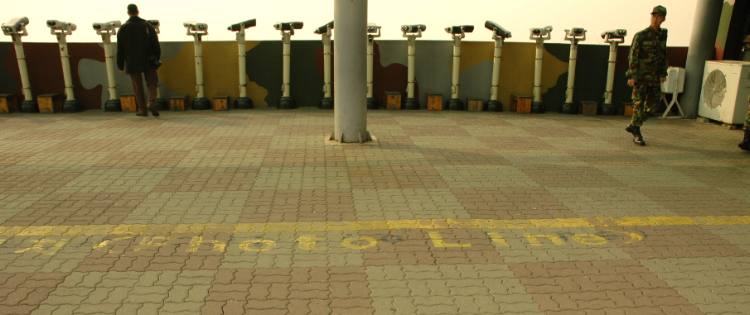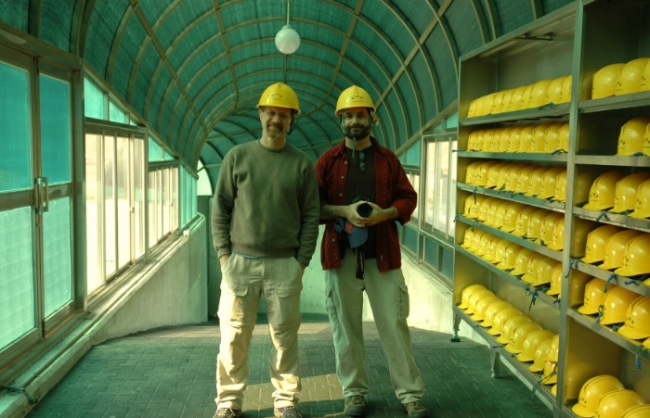4 min read
Korea has the scariest borders and the scariest street food but, it should also be noted, the most astonishing toilets. So there is balance here. If you get too freaked by pots of simmering fried bugs or marauders invading from the North, you can always retreat to the comfort of a microchiped toilet directing a jet of warm air over your butt as the battle between good and evil rages outside.
We were excited to be here in Seoul at the behest of Korean Airlines to film their flight operations, their big cargo planes and even their spotless kitchens. Did you know they prepare both Kosher and Halal meals for their worldwide passengers, plus the best bibimbap (Korean rice and vegetables) available at 30,000 feet?
Korea crackles with purpose. The people have been rushing into a future of commerce and success as if to escape the gravity of their past. The country’s split back in the early fifties, the ensuing war, and the neighboring family of madmen to the north – are all deeply baked into their psyche.
Think about it: Say the word ‘Korea’. There are no first associations with fun or comedy or romantic getaways. War is usually what first comes to mind - also insane dictators. And only after that do we think of Gangnam style, K-pop or Kias. It’s to their credit that the people of South Korea have built themselves a somewhat normal society despite the unrelenting insanity that has rained upon them.
But unlike, say Europe or Vietnam, where conflict raged but ultimately resolved, the war between the Koreas lives on. Like a chronic disease, the self-perpetuating war machine and lunatic first family in the North keeps re-infecting itself, the Korean peninsula and the world. No one has come up with a cure yet. But the South Koreans are taking imaginative steps to counter the madness. I’ll explain later.
Gyeongbokgung Palace
Our clients were generous with their food, culture and history. So first stop: Gyeongbokgung Palace. It’s big and it’s royal.
This imperial structure is a testament to Korean grit. Built in 1395, it was destroyed by Japanese invaders in the 16th Century. Rebuilt, it was torn down again by Japanese invaders in the 20th Century. Rebuilt again, its existence is the architectural equivalent of flipping the bird at past and future aggressors… but with elegance.
As if to highlight this dogged Korean spirit, warrior guards in traditional medieval dress surround the palace with their swords, ready to slay the next wave of aggressors or, should it be necessary, unruly tourists.
At a nearby temple, hundreds of worshipers gather under the eyes of three golden Buddhas to remember loved ones with prayers and candles. The ghosts of their great civil war still resonate daily with the older generation. The Korean people suffered during the long years of World War II and then again during the Korean War, a war that has not officially ended.
Perhaps this is why I saw a shade of melancholy in the older adults, even though they were materially thriving. A truce between the two sides occurred in 1953, but no peace agreement was ever signed. So for over sixty years, the two nations have been technically at war.
These decades have seen random attacks and aggression from the North – a reminder that despite the 21st century lives the South Koreans have built for themselves, one bad hiccup from Kim Jong-Nutz, just a hundred miles away in Pyongyang, could send their existence (and ours) into turmoil.
The DMZ
Like most Americans, the guys and I knew little about the history of this part of the world aside from occasional screaming headlines. We were here on a job, but our off hours saw us scoping Seoul and the busy street scene.
At a lunchtime restaurant, we sat on the heated floor, sampling dozens of new dishes, trying to process life in Korea. Amongst talk of our hotel’s comfort toilets and frightening beetle-infused street food, I recalled a news item about recent threats from the North. More unhinged dictator babble about loosing hell-fire on the South.
We decided we should take a closer look at the insanity.
Seoul is only 35 miles from North Korea - the borders, the most heavily defended on the planet. But with the approval of our hosts, we boarded a tour bus for an afternoon ride to the DMZ, the Korean Demilitarized Zone.
Established in the 1953 truce, this two and a half mile wide buffer zone is all that stands between the two Koreas. It is the most militarized spot on the planet – with several million forces facing off – it’s a pretty serious place.
In a landscape with this much animus, desperation and fear, bizarre plans are sometimes hatched, the results of which can be lethal but also surprisingly… comic. Our hosts had told us about one such martial endeavor: the Tunnels of Aggression.
Riding past the countryside with a handful of other tourists, I read up on our final destination, a rather surreal commie rabbit hole – the Number Three Tunnel. Since 1974, South Korea has discovered four of these hidden tunnels running under the DMZ and into their territory. There’s no question about their purpose: these tunnels are a portal for invasion – in a north to south direction.
Each time the South discovered a tunnel, they accused the North of aggression and breaking the truce. The North, in its typically surreal fashion would deny their existence, or claim the tunnels were for coal mining. This stretched credibility for at least three reasons:
1. The tunnels were discovered well into South Korean territory.
2. The tunnels were burrowed through solid granite. Not coal.
3. The walls of the tunnels were painted black. Really. To make them look like coal mines.
What’s Behind Tunnel Number… Three!
When the third tunnel was discovered in 1978 the North at first denied its existence. Then they said it was… you guessed it, part of a coal mine. But this coal mine was designed to allow 30,000 troops per hour to pass through in a surprise attack.
The South called it The Third Tunnel of Aggression. Not the catchiest name, but it stuck because of its descriptive accuracy.
Before arriving at the tunnel, our tour made a pit stop at a special place they wanted us to see. The DMZ is 160 miles long but there is one unique spot where the North and South Korean military are within spitting distance. It is called the JSA, or Joint Security Area.
I’m sorry to keep throwing all these abbreviations and scary concepts at you. I suppose it’s the expected result of traveling through a quasi-war zone. The fact that we were tourists traveling along this no-man’s land on a tour bus just made the experience that much more… I dunno… Korean.
Our bus entered this Joint Security Area and pulled to a stop at a bridge – sort of a walkway. It’s called the Freedom Bridge, also known as the Bridge of No Return. This is the site where the truce was declared between the two sides over sixty years ago.
More ominously, it is the site where all prisoners were exchanged. Prisoners from both sides were given the right to stay (and some did, many in the South, a few in the North) or cross the bridge to the other side. Once they made their decision, there was no going back. Ever.
The guys and I headed across this bridge where the fates of thousands were decided and the peace of the world is still held in uneasy suspension. A barrier now sealed off passage to the other side. It was covered with tributes, notes, flags, even pictures drawn by kids.
Everything was in Korean but I could guess at the hope and sorrows this bridge has shouldered over the decades. The history here is such a dark shade of totalitarian, it has seeped into popular culture.
In the James Bond film, “Die Another Day”, a replica of the bridge becomes the ominous locale where Bond and his communist counterpart are swapped. The movie, like most entertainment, had a nice tidy ending. Unlike this place.
With a cool wind whipping us, I was anxious to get back on the bus.
The Photo Line
At the site of the Third Tunnel of Aggression there is a viewing area where one can look out over the DMZ. A yellow line is painted along the walkway. It is called the Photo Line. One cannot step past this line with a camera to take pictures of the DMZ. Uncharacteristically, we didn’t have the urge to sneak a few shots.
There are some places you land in your life where you just don’t want to screw around. A few that come to mind in no particular order: the principal’s office at Wickshire Elementary School, a police station in Montreal, the DMZ Photo Line.
However, you can still step over the line, use the telescopes they have provided and take in the most unpopulated stretch of earth imaginable. I thought I could even make out the faint towers of the North Korea capital of Pyongyang in the distance. It was like getting a faint glimpse of the Emerald City. After it was bombed.
Lifting our spirits, at the entrance to the Third Tunnel of Aggression we got to put on fun, yellow hardhats so we wouldn’t bang our heads on the low ceiling. Again, it was no photos in the tunnel, please. Actually it was just, No Photos!
Descending the cramped, dimly lit tunnel was like a late night mixture of fear, excitement and just plain silliness. I could make out the black surface of the close walls and so I scratched the rock with a fingernail to examine the “coal”. Sure enough, the black paint flaked right off. Now I’m no geologist but even I can tell the difference between coal and a painted layer of bullshit.
Think about this for a moment. How many committees in North Korea were summoned at the behest of Dear Leader to formulate and execute this hare-brained scheme? Just exactly who were they trying to fool with this coalmine nonsense should they get discovered – an international inspection team of five year olds?
Where were we? What was this place, a hundred feet under South Korea that was equal parts aggression and insanity?
But the South Koreans had the perfect solution to this madness. At the end of our tour, we were expertly routed to the best part of any cultural attraction, the gift shop. Yes, the Third Tunnel of Aggression has its own gift shop.
There, I bought T-shirts with a DMZ logo, an insulated commuter cup and a 3-D photo of the Third Tunnel. Some of the items were even marked down.
What a perfect metaphor, this gift shop. With the singular focus of improving their citizens’ lives as opposed to the mindless aggression of the North, the South once again prevailed. Their gift shop mocked the lethal intent of the tunnel. They had turned it into a sideshow for tourists.
Yes, something deadly serious happened here, but it was found and finished. The South transformed the enemy’s dreams of invasion into a place of trinkets. Instead of AK-47’s the shop is stocked with commemorative mugs and key chains.
This is the beauty of the South Korean people - their freedom of imagination.
I still wear my DMZ T-shirt and proudly display my 3-D photo of the Third Tunnel of Aggression. They hold a lot of meaning for me, plus they were such a deal.
Jon Lapidese is a travel copywriter and blogger.


